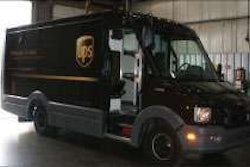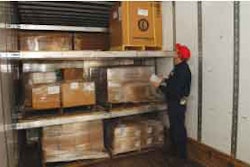Pitt Ohio
Pittsburgh
Develops a solution for automating much of the company’s online credit collections and customer service interfaces.
Weaving a better Web
Pitt Ohio upgrades efforts in Customer Service and Collections departments, driving productivity increases and cost savings
As an early pioneer of next-day less-than-truckload services coming out of federal regulation in the late 1970s, Pitt Ohio since has broadened its offerings to include truckload and supply chain services, and last year began offering a ground service to provide customers with small package solutions. As part of The Reliance Network, Pitt Ohio also provides nationwide LTL services.
During that time, the Pittsburgh-based carrier repeatedly has demonstrated its commitment to its customers through innovation designed to improve interaction with its customer base, winning a host of industry awards. In 2006, Pitt Ohio was first recognized as a CCJ Innovator for its customer service efforts and systematic approach to improving efficiency.
Five years later, Pitt Ohio finds itself a CCJ Innovator for the second time for developing an elegant solution for automating much of the company’s online credit collections and customer service interfaces.
Automating the front office
In recent years, Pitt Ohio has seen an explosion in the number of customers and third-party payment companies requiring the use of B2B Web portals to perform regular business transactions, each with a unique set of screens and logins.
Earlier this year, representatives from the company’s Credit and Collections department and Customer Service department approached the Information Technology team seeking help in managing the proliferation of Website processes that were eating up departmental time and resources.
Customer Service was faced with high-value accounts that required manual load acceptance and updates to shipment statuses. Credit and Collections was challenged with an increase in the number of customer and third-party payment sites it interfaced with on a daily basis.
“The long and short of it was just too many different sites, too much complexity and too much manual data transfer,” says Darren Klaum, director, Business Systems Group for Pitt Ohio.
To address the issue, Pitt Ohio established a “Web Integration & Automation” initiative to reduce employee interaction with external B2B portals while still meeting customer demands, improving productivity, reducing errors and streamlining processes.
Pitt Ohio began by identifying the most time-intensive customer and payment sites and investigated how those processes could be virtualized to minimize the stresses within the departments. Using Kapow Technologies’ Katalyst Web integration software, Pitt Ohio set up “robots” – custom programs that automate a user’s Website interaction, allowing for custom data extraction – in the Customer Service and Credit and Collections departments, and monitored the data migration for a three-month period.
The pilot proved so successful that Pitt Ohio immediately began installing robots in the Customer Service department for strategic accounts. Klaum says the migration of those accounts to Web automation has eliminated errors and reduced costs by sending data automatically as it becomes available and drastically cutting the need for a customer service agent to perform Web-based tasks.
The most recent robot for the Customer Service department cut the human involvement from a four- to six-hour process down to 30 minutes. “We’re seeing similar results throughout the Customer Service department,” says Klaum. “They’re taking calls now instead of performing manual data entry.”
By freeing up employees to focus on value-added services for Pitt Ohio’s clients, the company hopes the focus on Web automation will allow it to build on its customer service goals. “The accounts we’ve converted in the Customer Service area require special attention because they need to be updated more frequently or have a direct point of contact,” says Klaum. “Hopefully in the future this will allow us to add more white-glove service accounts.”
Pitt Ohio has added Web automation to roughly half of the 70 Websites used by the Credit and Collections department, and has seen productivity improvements of 25 percent as personnel no longer are required to copy data from one system to another before being able to analyze the information. The automated interactions between the external Website and the company’s internal collection software have improved data quality and provided more timely information, allowing collections agents to focus on value-added services rather than administrative tasks.
“They’re taking calls now instead of performing manual data entry.”
– Darren Klaum, director, Business Systems Group
The integration also has improved cash flow. Before Pitt Ohio’s Web Integration & Automation initiative, invoices 40 days past due were audited based only on information pulled every two weeks. Now, the company can load invoice updates immediately, allowing the agents to quickly take corrective actions and decrease outstanding receivables.
Pitt Ohio’s strategic approach has allowed the company to identify, support and upgrade efforts in both departments, driving productivity increases and cost savings throughout the organization. “This innovative way to leverage technology to meet the growing demand and emphasis on B2B portals has enabled Pitt Ohio to perform business more efficiently,” says Klaum.
All software programming is done on Pitt Ohio’s end, requiring no feedback or interaction with customers.
“Our customers and freight payment companies probably don’t even realize we’re using an automation tool to pull information or place information onto their sites,” says Klaum. “To them it looks like any other user. Plus, we can do this without affecting their Website’s performance or response time.”
Once a robot is built to interface with a specific B2B portal, it is easily customizable. “If a customer’s Website is updated or they change the way they display data, it doesn’t take a complete recoding of the whole program to fix it for that situation,” says Owen Baker, Business Systems analyst. “Point-and-click technology allows you to update the initial logic.”
There’s an app for that
In keeping with its focus on customer service, Pitt Ohio was an early adopter of smartphone technology, releasing an iPhone app in 2009 that allows customers to track shipments and calculate transit times for shipments anywhere in the Pitt Ohio service area. The company since has added real-time shipment activity for third-party, inbound and outbound less-than-truckload and ground shipments, and customers now can view and save copies of LTL bills of lading and their LTL proof-of-delivery receipts.
For non-iPhone/iPod users, customers still can access the information on their mobile devices through Pitt Ohio’s mobile website, m.pittohio.com. “As information demands increase, Pitt Ohio will continue to provide our customers with critical shipping information anytime, anywhere,” says Scott Sullivan, Pitt Ohio’s chief information officer and chief financial officer.













